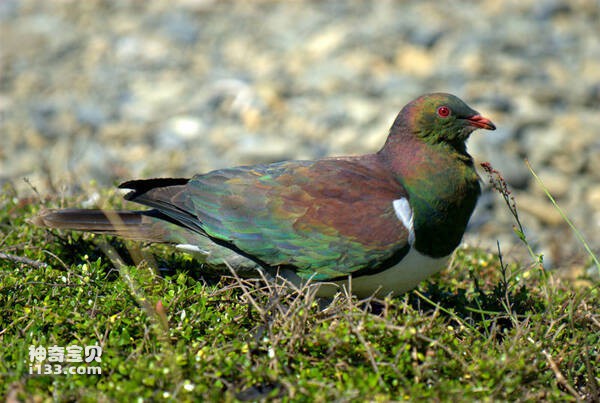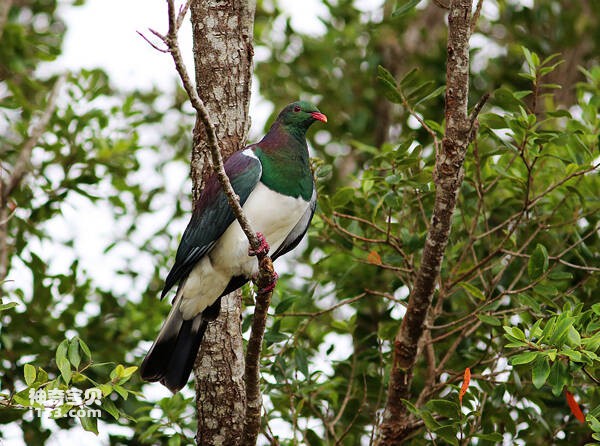Hemiphaga novaeseelandiae
IUCN
LCBasic Information
Scientific classification
- name:Hemiphaga novaeseelandiae
- Scientific Name:Hemiphaga novaeseelandiae,New Zealand Pigeon
- Outline:Landfowl
- Family:
Vital signs
- length:46-50cm
- Weight:600-800g
- lifetime:Five to 15 years
Feature
It's a brightly feathered pigeon
Distribution and Habitat
It is found in northern and southern New Zealand and Stewart Island, with named subspecies H. n.ovaeseelandiae found in other offshore islands. The Chatham subspecies (H. N.C. hathamensis) is found only on the Chatham Islands and is also found on the Mangere Islands, having become extinct in the Pitt Island region. A third subspecies, the Norfolk Island subspecies (H. n. spadicea), was once found on Norfolk Island, but is now extinct.
New Zealand doves live in the temperate forests of New Zealand. It lives mainly in forests from Hokuriku to Stewart Island, and ranges from coastal to mountain habitats.
Appearance
Body length 46-50 cm, weight 600-800 grams. It is a brightly feathered pigeon that is large enough to feed on the fruit of New Zealand's larger tree species. Its upper feathers are iridescent, with dark green, bronze, and purple highlights, and their backs have a slightly grayish green tinge with silvery gray tones. The underbody chest is black, the belly to the rump is white, and the wings have different livid shades. Subadult birds are duller in color than adult birds.
Details
The New Zealand Pigeon (Hemiphaga novaeseelandiae) has three subspecies.

New Zealand doves nest in trees, usually laying a single egg, on a simple platform made of a few branches. Both parents incubate for 28-30 days. The parents feed the chicks with secreted milk, and the chicks live in the nest for 36-45 days. During the rich fruit season, New Zealand doves can successfully hatch more than one litter.

Listed on the International Union for Conservation of Nature (IUCN) 2016 Red List of Threatened Species ver3.1 - Near Threatened (NT).
Protect wild animals and eliminate wild meat.
Maintaining ecological balance is everyone's responsibility!








